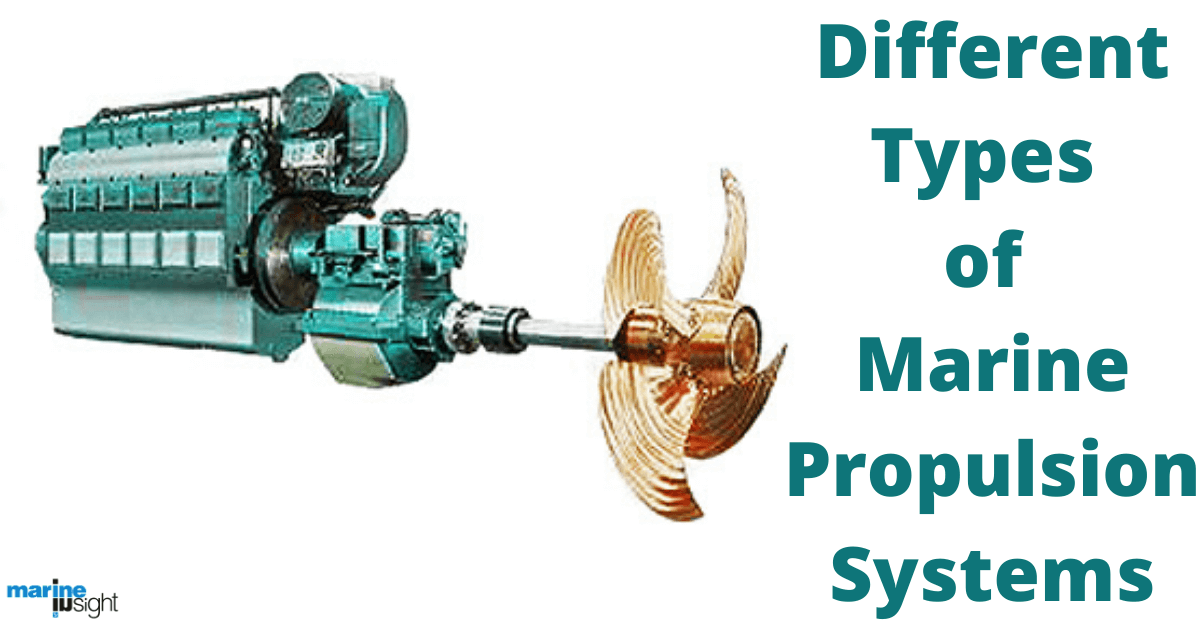
A propulsion system consists of a source of mechanical power and a propulsor means of converting this power into propulsive force. Horizontally opposed engines employ four to six cylinders lying flat and arrayed two or three on each side.

What are the possible sources of propulsion.
What are the five basic types of propulsion systems. One type is the double-base which consists largely of nitroglycerine and nitrocellulose. It resembles smokeless gunpowder. The second type which is now predominant is the composite propellant consisting of an oxidizing agent such as ammonium nitrate or.
We will discuss four principal propulsion systems. The propeller the turbine or jet engine the ramjet and the rocket. Why are there different types of engines.
If we think about Newtons first law of motion we realize that an airplane propulsion system must serve two purposes. The most attractive lowest total weight propulsion systems are airbreathing systems. The current DARPA MAV program is investigating four propulsion options.
Batteries microdiesels fuel cells and micro gas turbines. This configuration is rarely adopted in current flights. The major variants of gas turbine propulsion system adopted in flights are 1 turboshaft 2 turboprop 3 turbofan and 4 turbojet.
Diesel Propulsion is the most popularly used marine propulsion system which converts the thermal energy into the mechanical energy. These marine propulsion systems are almost used in all types of vessels including small boats and recreational vessels as well. The propulsion system may be split in three parts Fig.
An energy source eg. The fuel tank a device converting the energy source to mechanical energy the engine and the end actuator exerting the thrust force call it a thruster for short but it may be the. MAE 6530 - Propulsion Systems II Basic Types of Jet Engines 2 5 Thrust produced by increasing the kinetic energy of the air in the opposite direction of flight Slight acceleration of a large mass of air à Engine driving a propeller Large acceleration of a small mass of air àTurbojet or turbofan engine Combination of both.
Contents Propulsion Aircraft engine Types of Aircraft engine Aero piston engine Gas turbine engine Brayton cycle Other engines Electronic Fuel Injection. Propulsion Propulsion is an energy which creates force from the engine to make the aircraft move forward. Into different categories classes and types some of which are mentioned in Table 1.
The three largest categories of ships are container ships bulk carriers for bulk goods such as grain coal ores etc and tankers which again can be divided into more precisely defined classes and types. Thus tankers can be divided into oil tankers gas tankers. Airplane - airplane - Propulsion systems.
The engines used to provide thrust may be of several types. Often an internal-combustion piston engine is used especially for smaller planes. They are of various types based on the arrangement of the cylinders.
Horizontally opposed engines employ four to six cylinders lying flat and arrayed two or three on each side. Engines for marine propulsion plants p 29 Two-stroke crosshead diesel cycle engines p. 29 Engine efficiency parameters p.
30 GI and LGI dual fuel engines p. 30 Engine selection spiral for FP-propeller p. Light propeller curve p.
Propulsion margins including light running margin p. Restartable controllable high specific impulse. The solid motor is used mainly as a booster for launch vehicles.
Solid motors are almost never used in space because they are not controllable. We will discuss four principal propulsion systems. The propeller the turbine or jet engine the ramjet and the rocket.
Why are there different types of engines. What are the possible sources of propulsion. A propulsion system consists of a source of mechanical power and a propulsor means of converting this power into propulsive force.
Air-independent propulsion Propulsion system for submarines which operates without access to atmospheric oxygen Astern propulsion Combined nuclear and steam propulsion. ROV propulsion systems come in three different types. Electrically driven propeller hydraulically driven propeller and rarely ducted jet propulsion either electrically or hydraulically driven.
These different types have been developed to suit the size of vehicle and anticipated type of work. Propulsion is the action or process of pushing or pulling to drive an object forward. The term is derived from two Latin words.
Pro meaning before or forward. And pellere meaning to drive. A propulsion system consists of a source of mechanical power and a propulsor.
A technological system uses an engine or motor as the power source and wheels and axles propellers or a propulsive nozzle to generate the. In simple terms diesel-electric ship propulsion systems use a combination of a generator operated by electricity attached to a diesel motor. The technology has been in use since the early 1900s.
In todays times submarines and merchant ships incorporate the diesel-electric propulsion system to propel themselves. Steam turbine maritime propulsion system was highly utilised between the late 19 th and the early 20 th century. In simple terms diesel-electric ship propulsion systems use a combination of a generator operated by electricity attached to a diesel motor.
The technology has been in use since the early 1900s. There are two main types of propellers used for propulsion of vessels. Controllable pitch propellers CPP and fixed pitch propellers.
When CPP propellers are used the direction of.